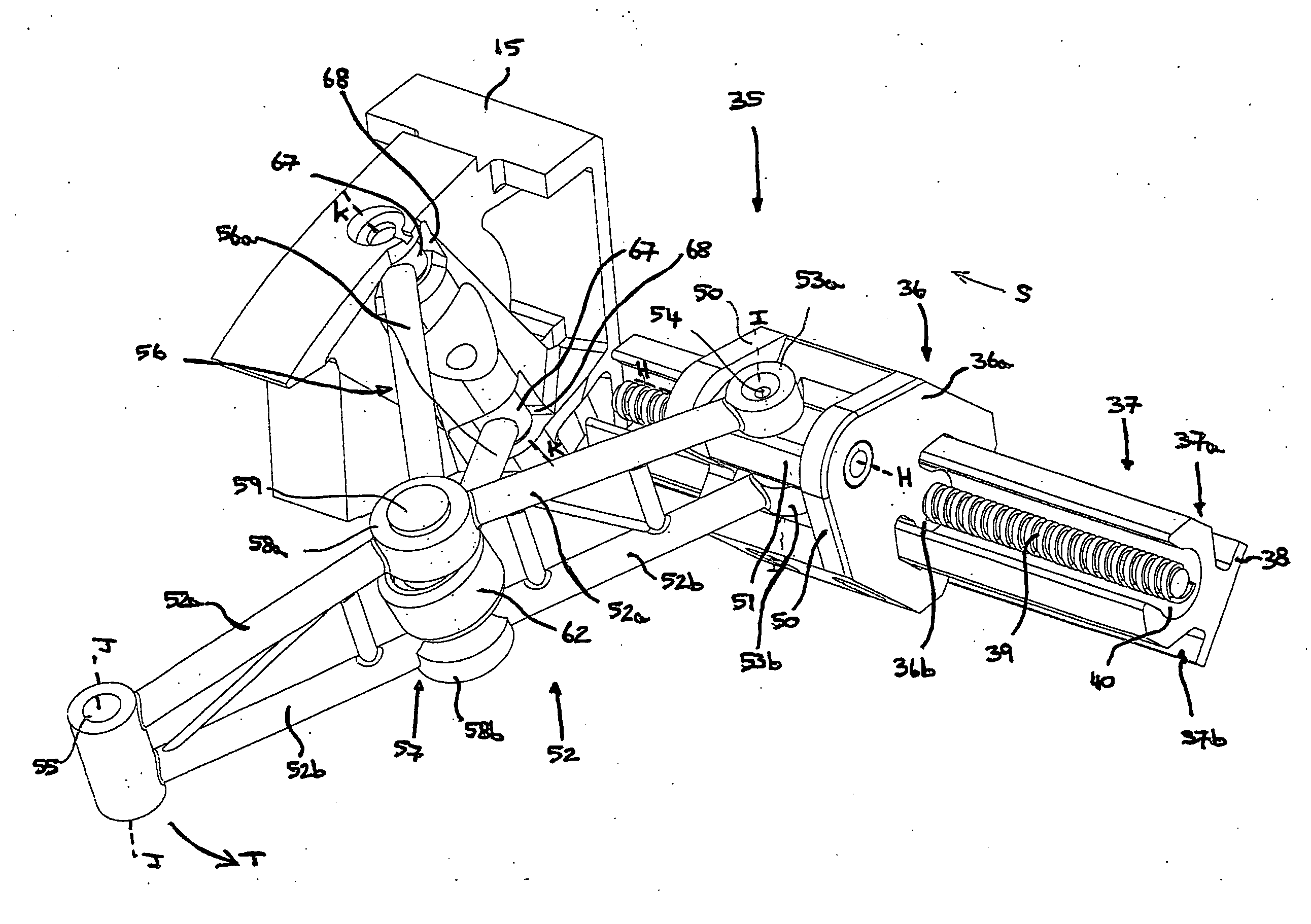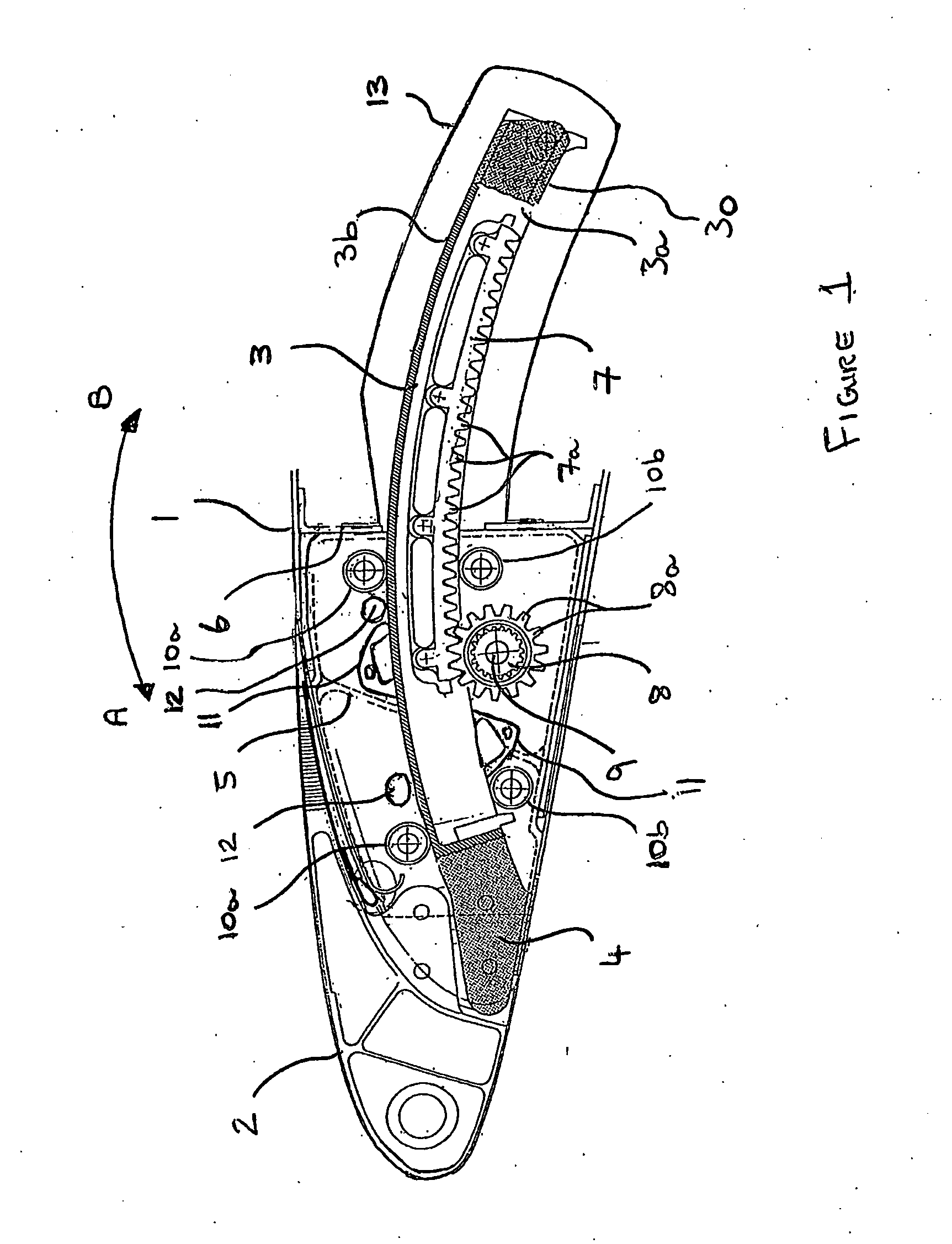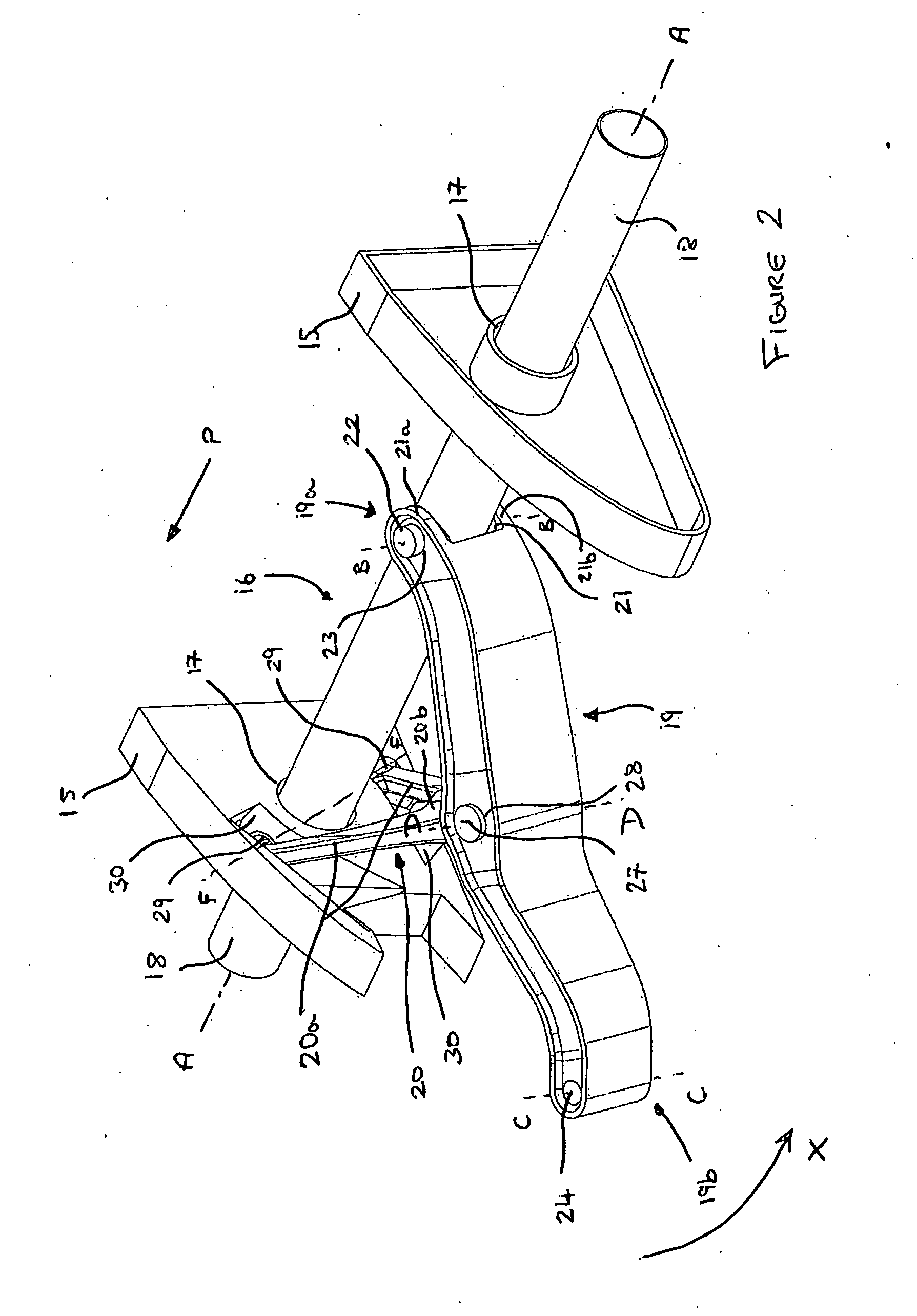Slat support assembly
a technology of support assembly and slats, which is applied in the direction of mechanical equipment, transportation and packaging, etc., can solve the problems of wing structure, inconvenient opening, and design restrictions on shape, and achieve the effect of reducing the overall weight of the assembly
- Summary
- Abstract
- Description
- Claims
- Application Information
AI Technical Summary
Benefits of technology
Problems solved by technology
Method used
Image
Examples
Embodiment Construction
[0061]Referring primarily to FIG. 4, there is shown a slat support assembly 35 according to the present invention which employs a modified scissor mechanism similar that previously described. Fundamentally, the assembly of the present invention no longer relies on a slideable and rotatably mounted tube. Furthermore, the connection between the primary and secondary support arms has been modified.
[0062]Referring to FIGS. 4 to 8, the assembly 35 comprises a carriage 36 having a body 36a mounted on an elongate track 37. The track 37 is rigidly attached to the wing structure of an aircraft so that it remains stationary relative to the rib 15. The track 37 has a flange 38 that may be placed against part of the wing structure. Holes (not shown) may extend through the flange 38 to allow bolts or other conventional fasteners to be inserted therethrough to facilitate attachment of the track 37 to the wing structure. The track 37 also has a carriage mounting portion 37a attached to the flange ...
PUM
 Login to View More
Login to View More Abstract
Description
Claims
Application Information
 Login to View More
Login to View More - R&D
- Intellectual Property
- Life Sciences
- Materials
- Tech Scout
- Unparalleled Data Quality
- Higher Quality Content
- 60% Fewer Hallucinations
Browse by: Latest US Patents, China's latest patents, Technical Efficacy Thesaurus, Application Domain, Technology Topic, Popular Technical Reports.
© 2025 PatSnap. All rights reserved.Legal|Privacy policy|Modern Slavery Act Transparency Statement|Sitemap|About US| Contact US: help@patsnap.com



